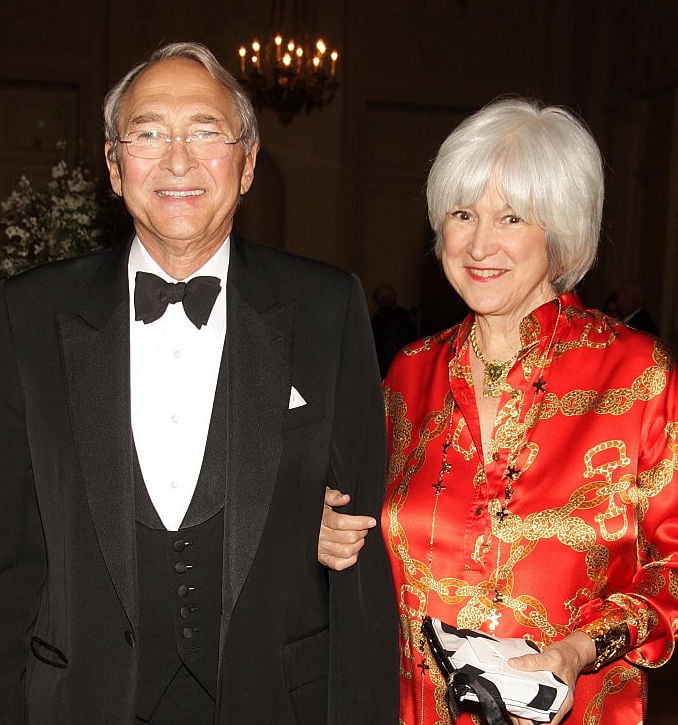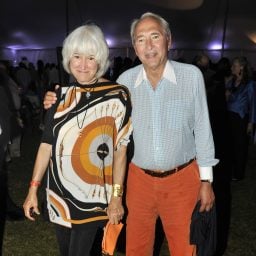Artist Mia Fonssagrives-Solow, married for 48 years to the late New York real estate multibillionaire and art collector Sheldon Solow, has told Artnet News that his collection will go on long-term public view in New York in a privately run museum.
Some of his collection—including works by Jean-Michel Basquiat, Alexander Calder, Franz Kline, Henri Matisse, Joan Miró, and Pablo Picasso—has been on view through the windows from the sidewalk at his property at 9 West 57th Street.
There, the Solow Art and Architecture Foundation has kept the collection largely inaccessible to the public, despite the Solow family getting tax breaks for running the organization. The space is now slated to be the site of the new museum.
Solow died on November 17 at 92 years old. Forbes put his wealth at $4.7 billion this month, placing him at number 167 on its list of the richest Americans. His son, Stefan Soloviev, who uses an older spelling of the family name, now takes over the family business.
“Stefan and I are going to build the museum that Sheldon was looking forward to getting underway,” Fonssagrives-Solow said in a phone interview on Wednesday, indicating that the citywide shutdown stopped the new institution’s progress.
“On March 13, we went to the country and he wanted to meet with architects, but I told him, ‘Let’s stay safe.’ And all summer we held hands and talked about this museum. We’re going to put it together and celebrate his life. It’s something he’s wanted to do all his life, but he didn’t come around to doing it until now.”
A Botticelli from his collection, estimated at $80 million, and which could have been the centerpiece of the museum (or the cornerstone of any museum wing), is heading to the auction block at Sotheby’s in January. Solow was also the one who offered the $141.3 million Giacometti that became the most expensive sculpture ever sold when it went on the block at Christie’s in May 2015, according to Bloomberg.
ARTnews, meanwhile, reports that he sold an Amedeo Modigliani painting for $42.1 million in 2013 and Francis Bacon’s Portrait of Henrietta Moraes (1963) for $33.5 million in 2012.
In 1973, Solow bought a Picasso from Sotheby’s for $800,000, then a record price for the artist. “When the press reported that he had paid the most ever paid for a Picasso, they were so snide,” Fonssagrives-Solow said. “He was so embarrassed that we kept it in a closet for a year.” He sold that same work at auction for $63.6 million in 2016.
Organizations like the Solow Art and Architecture Foundation, which receive tax benefits for nominally serving the public but remain largely closed or offer limited public hours, have come in for scrutiny in recent years.
A US Senate subcommittee found the tax structure “ripe for exploitation,” the Art Newspaper reported in 2016. The Senate examined institutions including Glenstone, the Broad, the Hall Art Foundation, and the Goss-Michael Foundation, among other foundations.
Crain’s New York Business reported in 2018 that Solow’s foundation, despite offering no public hours and having assets valued at upward of $200 million, still received federal tax breaks. Crain’s even turned up a website spoofing the Solow Foundation, complete with images of works from its collection, showing photos taken from the street, partly hidden by glare.







